Whenever I go travelling, buying souvenirs isn’t really on the top of my list. Sure, I might get a fridge magnet from an interesting place like Sanliurfa or maybe some nice fabric, but my favourite items to bring home from abroad are ingredients to cook with.
While I visited Hungary, I decided to do a bit of a deep dive into a spice that has always been in my kitchen, but I hadn’t really paid much attention to: paprika. Aside from thermal baths, perhaps what Hungary is best known for is the colourful red spice that is in many of its national dishes.
I’m now fully stocked with many different types of paprika, and here’s what I was able to learn during my recent trip to Budapest.
Why Is Paprika So Popular in Hungary?
Paprika, which is made from peppers, was introduced to Hungary by the Turks in the 16th century. Peppers were originally used as decorations, and not for cooking or making the spice.
Peasants, shepherds, and herdsmen who had more interaction with the Turks were first exposed to paprika as a foodstuff and spice, and began to season their meals with it. As time wore on, those in higher classes took note of using paprika in cooking, and began to use it, too.

Paprika has become a main ingredient in many of Hungary’s national dishes. You’ll notice a vibrant red or orange colour in gulyás (goulash), csirke paprikás (chicken paprikash), pörkölt (meat stew), and many other Hungarian dishes.
In Hungary, the most favourable growing regions for peppers are in the Kalocsa and Szeged regions in southern Hungary. Peppers need plenty of sunshine to ripen and become sweet, and the climate in these areas is perfect for the plant.
How Is Paprika Made?
Typically, ripe peppers are picked in September and then dried in electric ovens. Prior to the advent of automated machines, farmers would hang the peppers to dry in the sunshine or place them in hot ovens.
Once the peppers have been thoroughly dried out, they are crushed and ground into a fine powder. This process used to be done by foot and with a mortar and pestle, but that manual process has since been replaced with automatic machines.
Originally, it was difficult to control the heat level of paprika, as the veins and seeds of the peppers had to be manually removed prior to being ground. Some capsaicin, which is what makes peppers spicy, always remained in the powder, but it was basically impossible to control.
In the 1800s, the Pálfy brothers, who hailed from Szeged, found a way to efficiently remove veins and seeds, which paved the way for higher scale production of the spice. Further developments in plant cross-breeding and machine automation resulted in various types of paprika and mass production.
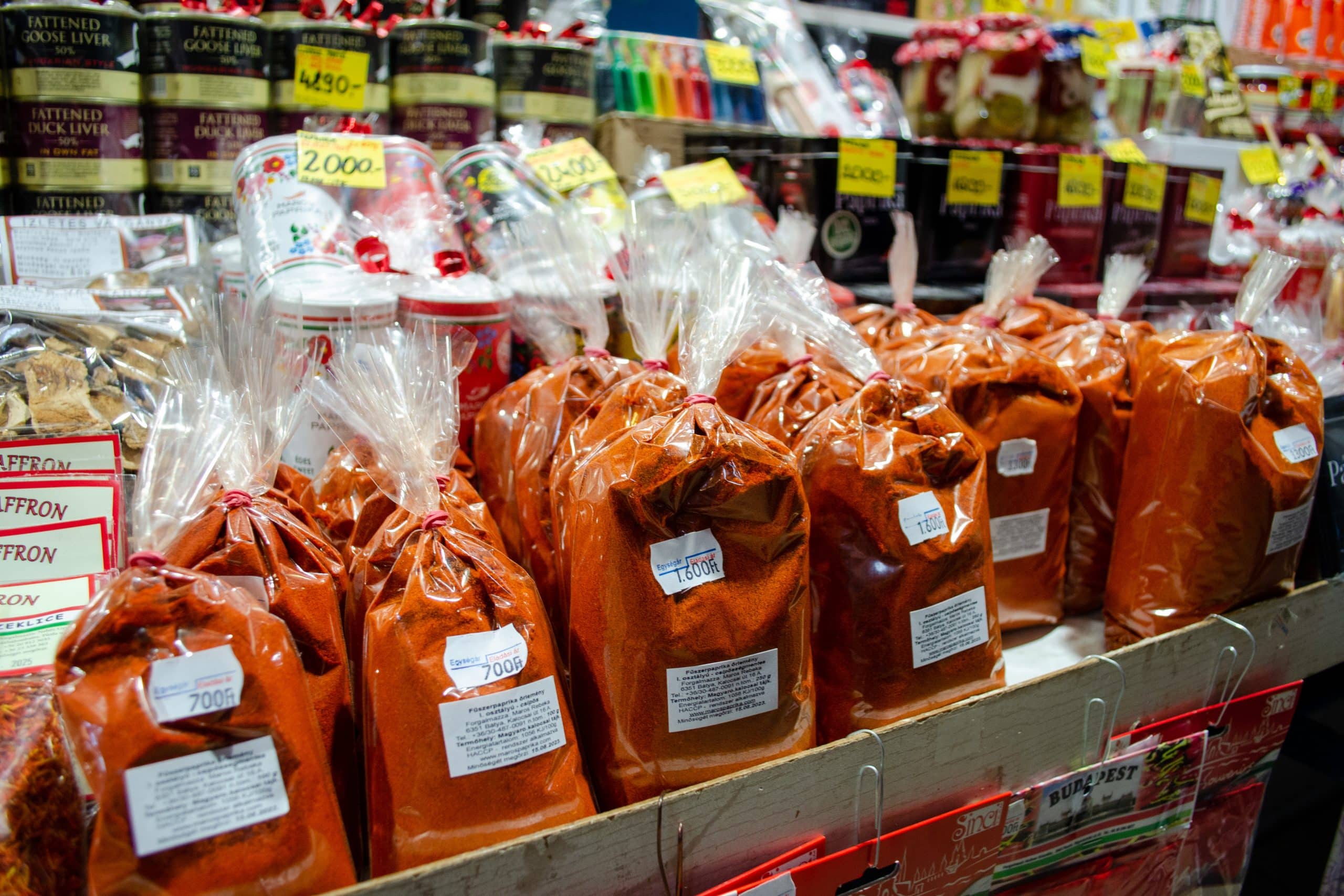
Different Grades of Paprika
After speaking with hotel staff and some locals, I spent the better part of a morning at the Great Market Hall in Budapest speaking with shopkeepers about different types of paprika. I was surprised to learn that there are roughly eight different grades of paprika, which are supposedly distinct from each other.
Prior to my visit, I was aware that there were such things as hot paprika, sweet paprika, and smoked paprika, but I didn’t realize that I was really just scratching the surface.
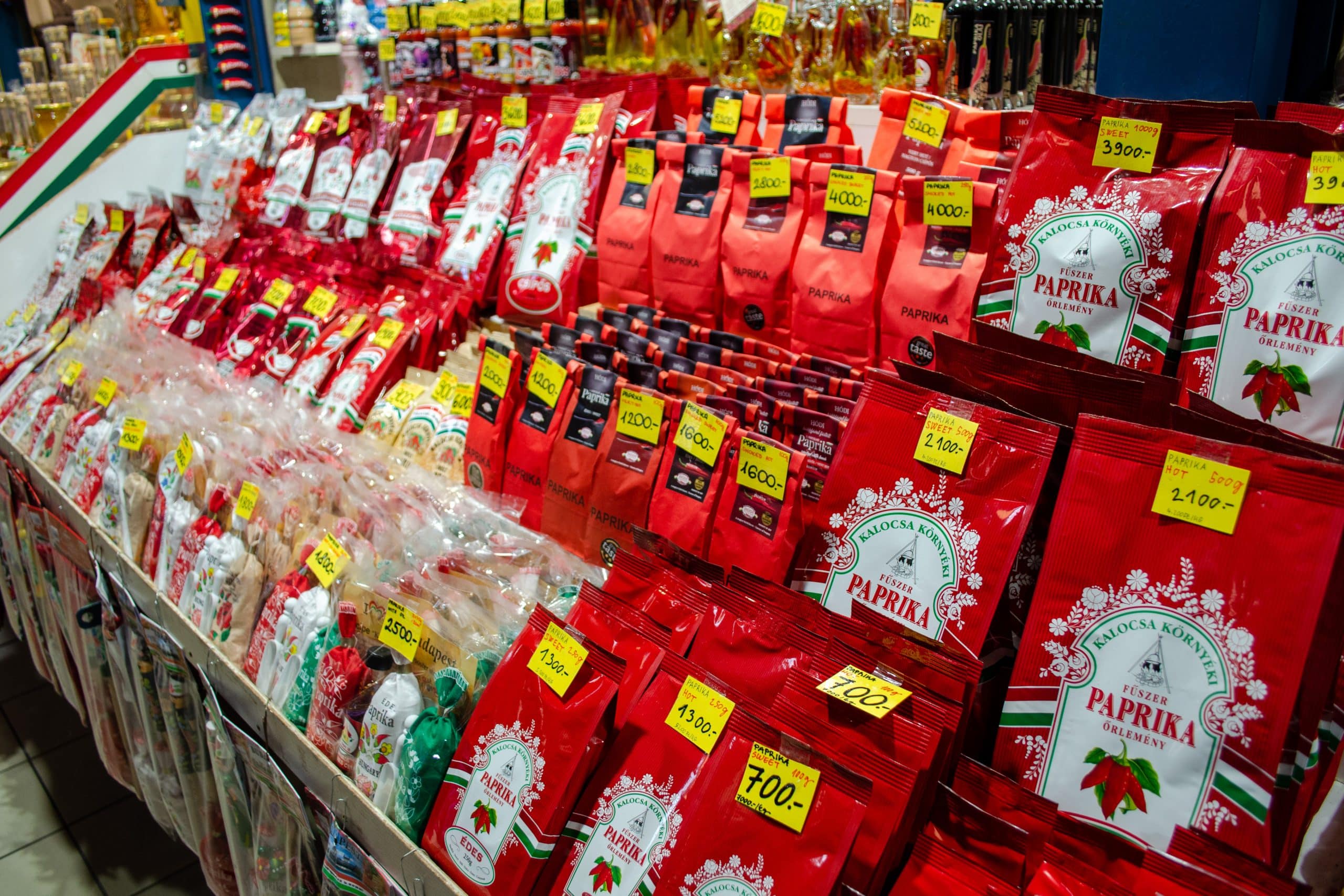
I was successful in finding seven of the eight grades, including various smoked versions of some.
At the mildest end of the paprika spectrum is különleges, or “special quality”. This is the most mild type of paprika, and typically has the brightest red colour.
Csípősmentes csemege, or “delicate” paprika, is still mild, but has a richer flavour than különleges.
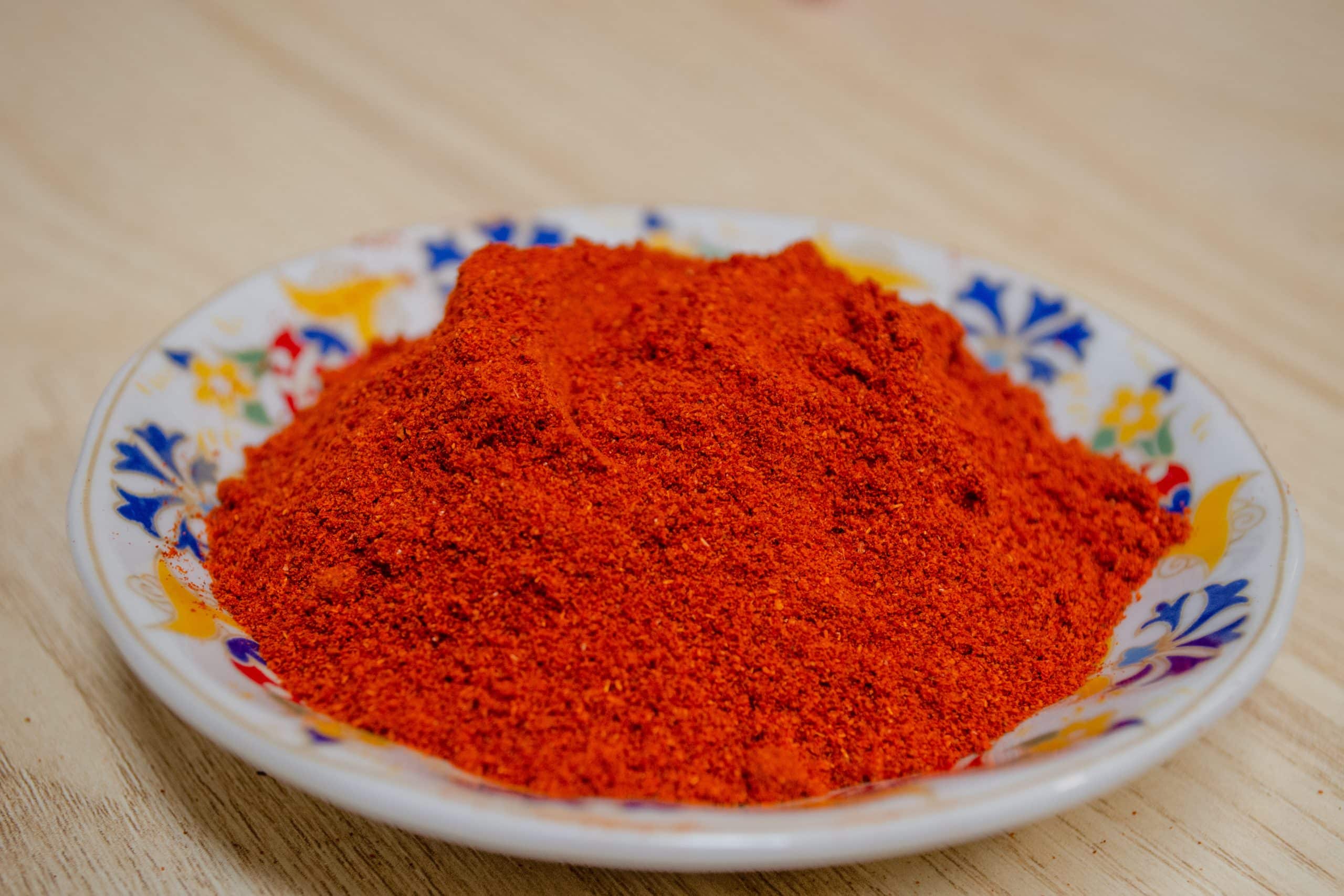
Csemege, or “exquisite delicate” paprika, has a bit more heat than csípősmentes csemege, but isn’t as pungent as other varieties of paprika.
Csípős csemege, or “pungent exquisite delicate” paprika, turns up the heat dial a bit more than csemege, but isn’t as sweet as some of the following varieties.
Édesnemes, or “noble sweet” paprika, has a bit of heat and comes with a vibrant red colour. This is the common type of paprika, and likely what most people have in their kitchen cupboards.
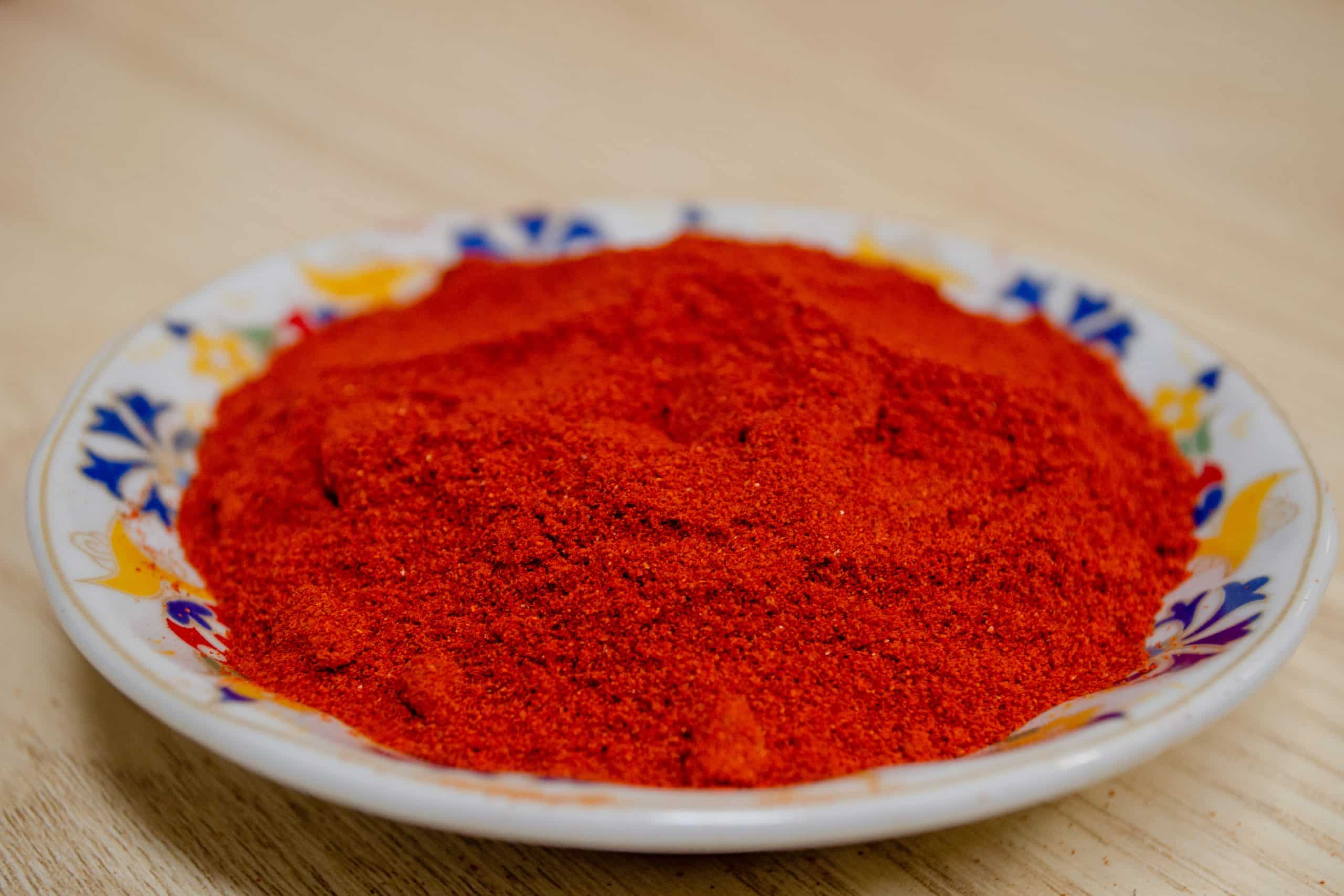
Félédes, or “half-sweet” paprika, strikes a balance between sweet and hot.
Rózsa, or “rose” paprika, has a light red or pinkish colour, and is mildly spicy. It’s only available in the spring, and unfortunately I wasn’t able to find any in Budapest during my visit in September.
Erős, or “hot” paprika, has a rusty brown or orange colour. It’s the hottest variety of paprika, and can also range in heat from pleasantly spicy to turning your mouth into a fiery inferno.

You’ll also be able to find different grades of paprika in smoked varieties. The smell is absolutely delicious, and adds some depth and complexity to your dishes.
For smoked paprika, look for ones that have been naturally smoked with beechwood, as they are superior to all other smoked varieties.
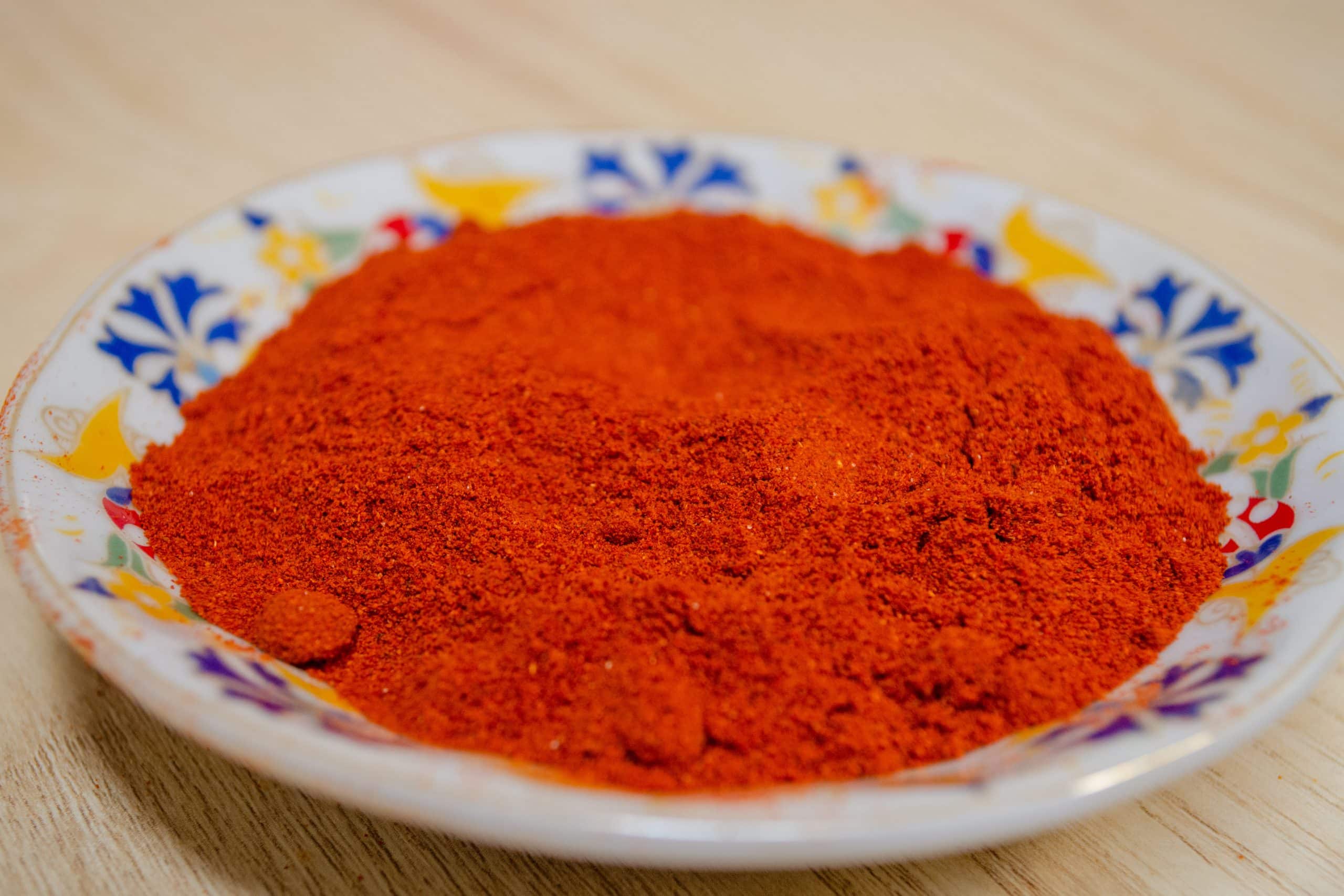
The best paprika powders are homemade. Check with the shopkeepers to find out which are homemade and which are mass-produced, or better yet, visit one of the towns where paprika is from for the best prices and quality.
Since returning home, I’ve been experimenting with the different grades of paprika. While the differences can be quite subtle, especially if your tastebuds aren’t very sensitive, the quality and depth of flavour is noticeable when compared to the typical “garden-variety” paprika I’ve been buying up until now.
Aside from the dried varieties of paprika, keep an eye out for paprika paste, too. It usually comes in metal tubes, and can either used as a replacement for dried paprika, or as a condiment on cooked food.
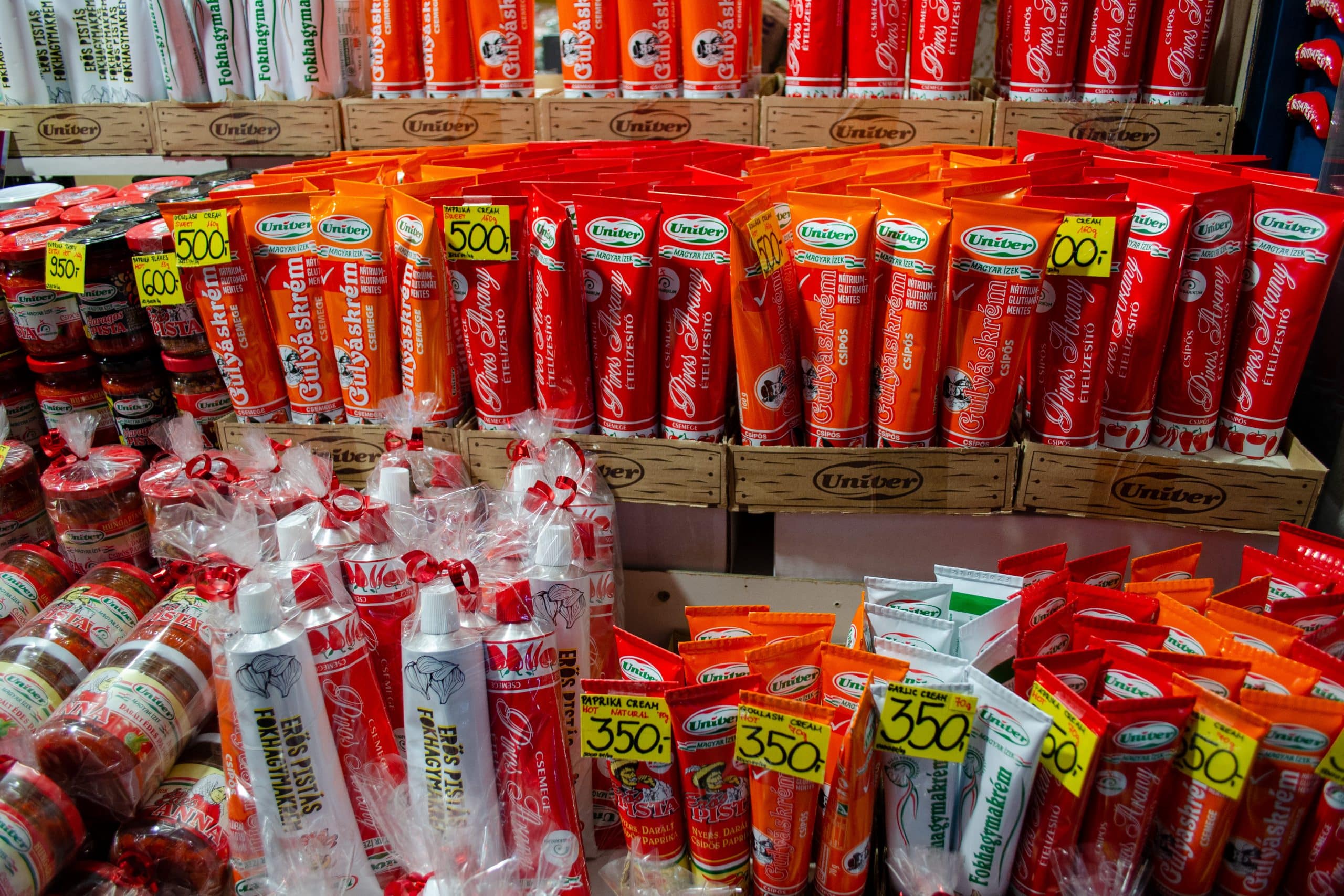
I was able to find a few different varieties of paprika paste, including csípős, csemege, and erős. I also came across gulyáskrém, a paste used as a base for goulash made of paprika, onions, tomatoes, and spices, as well as tubes of garlic paste.
Paprika paste has become a staple in our kitchen, and the flavour it adds to dishes is divine. You’ll find it at a very attractive price in Budapest, so stock up before heading back home, where it can be much more expensive.
Conclusion
If you’re visiting Hungary, be sure to pick up some paprika to bring home as a souvenir. You likely won’t find better paprika at such an affordable price, and the quality will change the way you shop for and use paprika.
If you have the chance to check in with a local, be sure to get their advice on where to find the best paprika. In Budapest, your best bet is likely at the Great Central Market, but even Hungarian paprika purchased in grocery stores is likely much better than what you can typically get in North America.




















When I saw this title, I thought for sure this was satire aimed at recent complaints on reddit about how off-topic this blog has gotten.